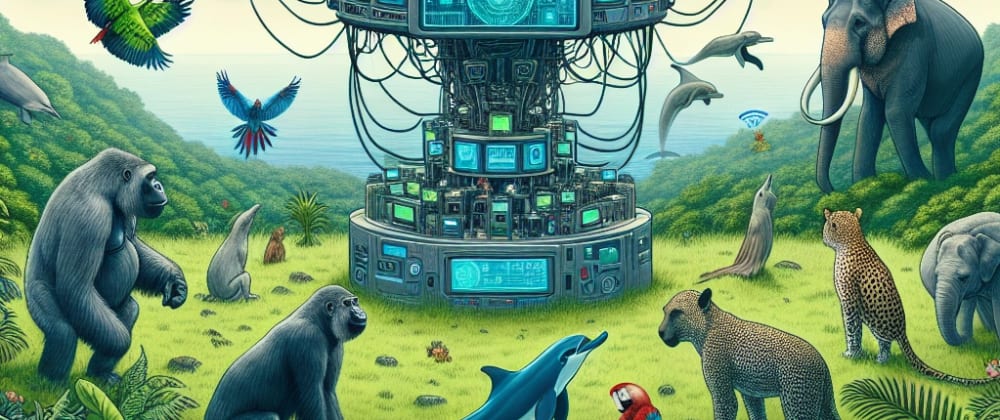In a groundbreaking study published under the title "Contextual and Combinatorial Structure in Sperm Whale Vocalizations," researchers at MIT CSAIL and Project CETI have made significant strides in deciphering the complex communication systems of sperm whales. By harnessing the power of machine learning, they have uncovered what appears to be a sperm whale "alphabet," shedding new light on the intricate world of cetacean communication.
This remarkable discovery not only deepens our understanding of these magnificent creatures but also highlights the immense potential of technology in unraveling the mysteries of animal communication. As we continue to develop and refine these tools, we stand on the brink of a new era of scientific exploration, one that promises to reshape our relationship with the natural world.
🐋 Decoding the Language of Sperm Whales
The study, led by CSAIL director Daniela Rus, focused on sperm whale codas—a series of clicks that serve various linguistic functions. By applying machine learning techniques to a dataset of 8,719 codas, the researchers discovered previously undescribed variations in coda structure, revealing a complex combinatorial coding system.
This breakthrough challenges our previous understanding of sperm whale communication, which had identified around 150 distinct coda types. The new findings suggest that these codas are not arbitrary but rather form a sophisticated phonetic alphabet, allowing whales to combine individually meaningless elements into larger, meaningful units—a concept known as duality of patterning, which was previously thought to be unique to human language.
🎵 The Music of Whale Communication
One of the most fascinating aspects of this study is the use of musical terminology to classify the contextual details of sperm whale vocalizations. By analyzing factors such as tempo, rhythm, ornamentation, and rubato, researchers were able to gain a richer understanding of how these sounds function as exchanges between whales, rather than isolated instances of communication.
This interdisciplinary approach, combining cutting-edge technology with concepts from musicology and linguistics, demonstrates the power of collaboration in pushing the boundaries of scientific discovery. As we continue to explore the complex world of animal communication, it is clear that we must draw upon the expertise of researchers from a wide range of fields to fully comprehend the depth and nuance of these systems.
🔍 Implications and Future Directions
The implications of this research are far-reaching, extending beyond the realm of sperm whales to encompass a wide range of species and ecosystems. As Daniela Rus notes, the Teams decision to focus on sperm whales was driven by the availability of extensive datasets and the discrete nature of their communication system, which lends itself to easier analysis than the continuous vocalizations of other species like humpback whales.
However, the success of this study serves as a proof of concept, demonstrating the immense potential of machine learning and other advanced technologies in deciphering the complexities of animal communication. As we refine these tools and expand our datasets, we may uncover similar patterns and structures in the vocalizations of other species, from the haunting songs of humpback whales to the intricate calls of birds and primates.
Moreover, as we deepen our understanding of animal communication, we may discover new ways of interacting with and learning from the natural world. By developing methods to interpret and respond to the vocalizations of other species, we can foster a greater sense of connection and empathy with the creatures that share our planet, leading to more effective conservation efforts and a more harmonious coexistence.
🌍 A New Era of Discovery
The groundbreaking work of MIT CSAIL, Project CETI, and other research institutions around the world marks the beginning of a new era in our understanding of animal communication. As we harness the power of technology to unravel the secrets of the natural world, we stand poised to make countless discoveries that will reshape our relationship with the creatures around us.
From the depths of the ocean to the canopies of the rainforest, the potential for exploration and discovery is limitless. By combining cutting-edge tools like machine learning with the expertise of researchers from a wide range of disciplines, we can unlock the hidden patterns and structures that underlie the complex communication systems of the animal kingdom.
As we embark on this exciting journey, it is essential that we approach these endeavors with a sense of humility, respect, and wonder. The natural world is a vast and intricate tapestry, woven from countless threads of interaction and communication. By carefully studying and interpreting these threads, we can gain a deeper appreciation for the richness and diversity of life on Earth, and work towards a future in which humans and animals can coexist in harmony and mutual understanding.
🔬 Conclusion
The discovery of a sperm whale "alphabet" by researchers at MIT CSAIL and Project CETI is a testament to the power of technology in unlocking the secrets of animal communication. By harnessing the potential of machine learning and other advanced tools, we stand on the brink of a new era of scientific exploration, one that promises to reshape our understanding of the natural world and our place within it.
As we continue to refine these technologies and expand our datasets, we may uncover similar patterns and structures in the communication systems of other species, leading to countless new discoveries and insights. Moreover, by developing methods to interpret and respond to the vocalizations of other creatures, we can foster a greater sense of connection and empathy with the animals that share our planet, paving the way for more effective conservation efforts and a more harmonious coexistence.
The future of animal communication research is bright, and the possibilities are endless. As we embark on this exciting journey of discovery, let us approach these endeavors with a sense of wonder, respect, and determination, knowing that the secrets we uncover may hold the key to a deeper understanding of the world around us and our place within it.







Top comments (0)